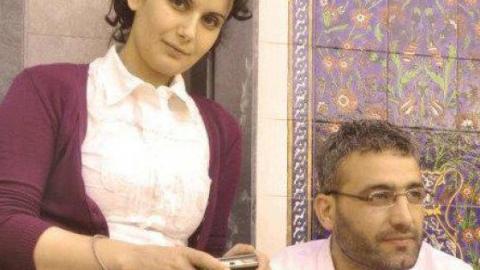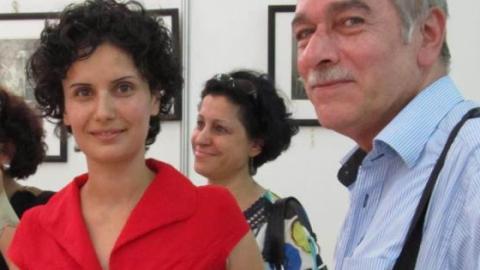When the Arab Spring revolutions first broke out, artist Keffah Ali Deeb was one of the first people in Syria to protest outside the Tunisian, Egyptian and Libyan embassies. She joined other activists in standing up against Syria’s security apparatus by holding candlelight vigils in honor of the martyrs of those respective countries. Like other Syrians inspired by events in neighboring countries, Deeb hoped that the people of her country would soon rise up against their oppressive regime and demand their freedom.
Of these demonstrations held in early 2011, Deeb said, “We were trying to break the barrier of fear that existed in Syria, and to get people used to seeing activists go out in the streets without fear of security forces.” She said she was certain Syria would witness its own revolution, and when it was born on March 15, 2011, she joined every protest she could. Deeb joined protesters in Arnus Square and Muhafaza Square in the center of Damascus, in Al-Fahame and in Qeimariya in Qaboun. As regime forces responded to nonviolent protesters with live ammunition, she mourned the martyrs that fell across Syria.
https://www.youtube.com/watch?v=jhiTtCD6F-M
Deeb was a proponent of the nonviolent movement, and often traveled to high-tension areas with friends of all sectarian backgrounds, to prove that the revolution is for all Syrians. She was not always successful in delivering this message, but continued to work regardless. “It is better to light a candle of hope than to curse the darkness,” she said.
Throughout her civil resistance, Deeb was arrested by regime forces on multiple occasions. She was once stopped at a demonstration in Arnus and was then freed. At the funeral for Bassel Shahade, a renowned Syrian martyr and filmmaker, Deeb was detained for a number of hours after she and other activists began singing pro-democracy songs. Deeb was also arrested once with her friend Rami Hanawi on the Mazze highway. Hanawi has not yet been released.
Unlike many of Deeb’s activist friends, she recognized the importance of youth participation in the political aspect of the revolution, so that, once the revolution succeeded, Syria could have a political system that belonged to its people. She joined the Together movement and the National Coordination Committee for Democratic Change, of which she was a founding member. Deeb also worked alongside well-known dissidents such as Abdulaziz Al-Khair, Mohammad Saied Rasas and Hasan Abdulazeem. She was one of the people who met with Kofi Annon and Lakhdar Brahimi, UN-Arab League Joint Special Envoys to Syria.
With the birth of Syria’s military uprising, and the formation of Free Syrian Army Battalions, Deeb warned of the dangers of taking up arms. She insisted on the continuance of the nonviolent movement, and did not stop despite being accused of being a traitor to the revolution. Among the activities Deeb participated in were protests, the distribution of leaflets, closing off roads in the capital, and encouraging people to strike. She also dialogued with Syrians who left the nonviolent movement to take up arms to try to convince them of her point of view.
As the months passed, and the regime began destroying large swaths of Syrian land, families began pouring into Damascus, which was relatively safe at the time, from other parts of Syria. Deeb worked with two friends, Hanawi and Zaidoun Zoabi, to assist these internally displaced people. The trio of relief activists was known for the fact that each of them came from a different sect, yet they worked together toward a common goal and tried to promote national unity.
Zoabi said of their team, “Rami and Keffah are very well known in Damascus and its outskirts, and in Homs and Daraa. I have not met people as brave as they are, and as devoted as they are to national unity and battling sectarianism.” He added that the three of them were trusted because they were an example of coexistence and cooperation between Sunni Muslims, Druze and Alawites.
“I hope to one day have the chance to write about my experiences working with Rami and Zaidoun,” Deeb said. “Those days of joining protests, taking part in relief efforts and assisting the wounded are unmatchable.”





